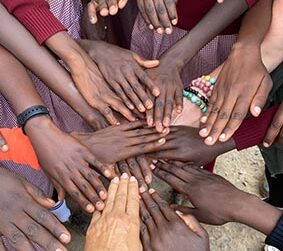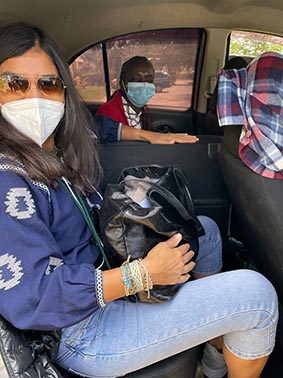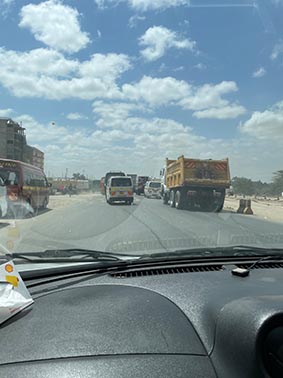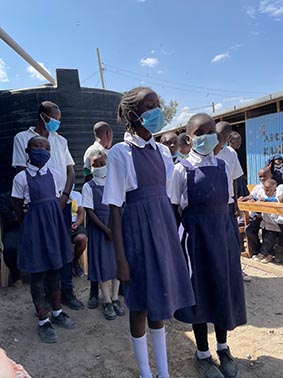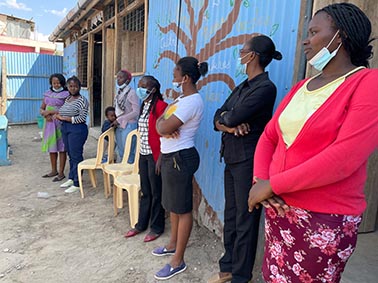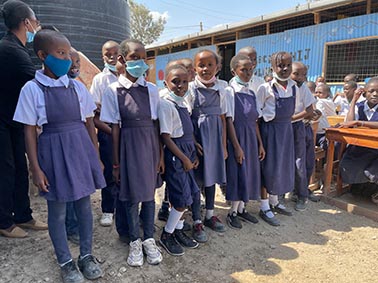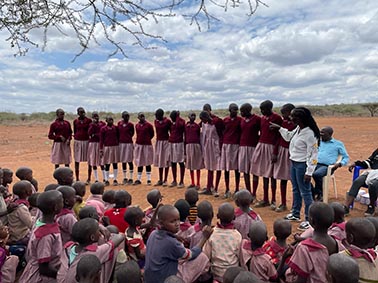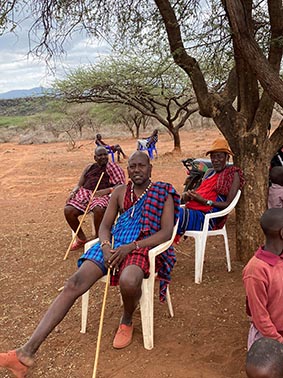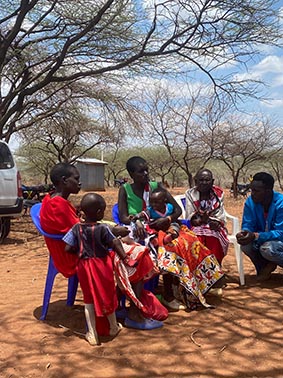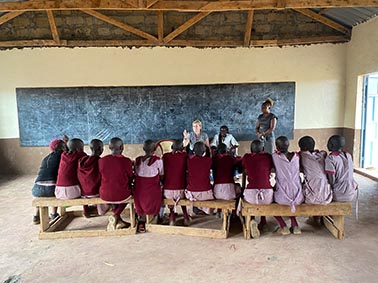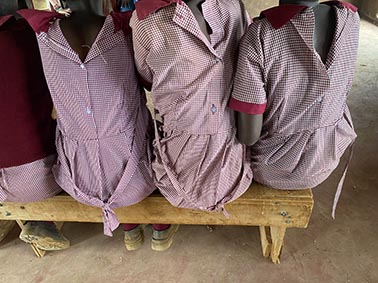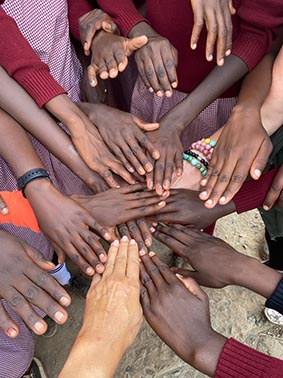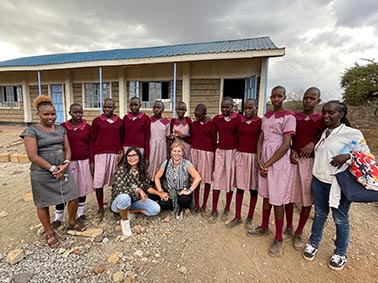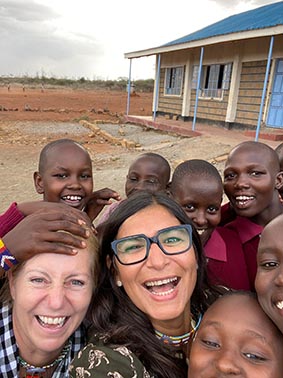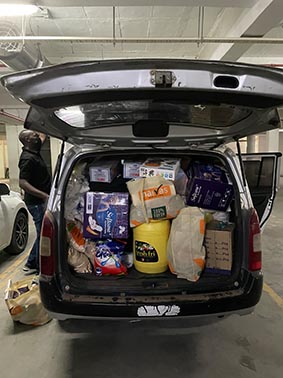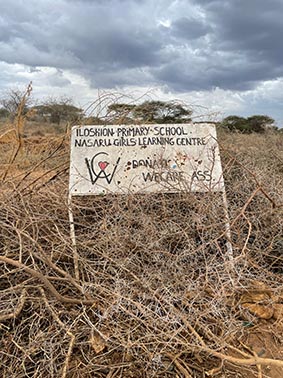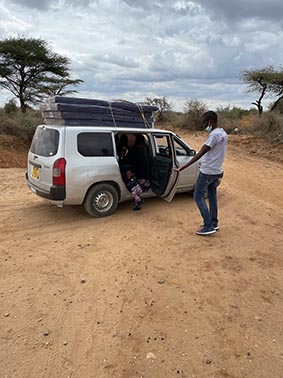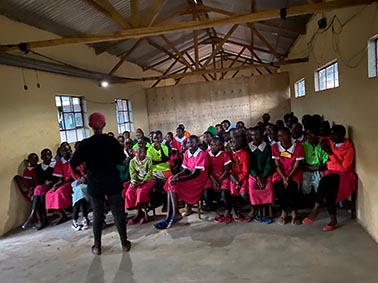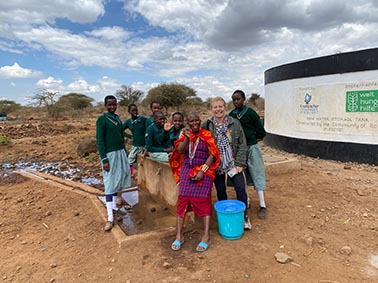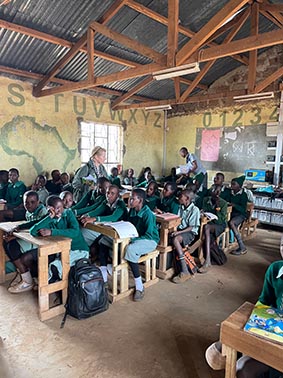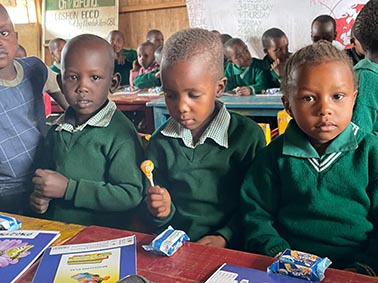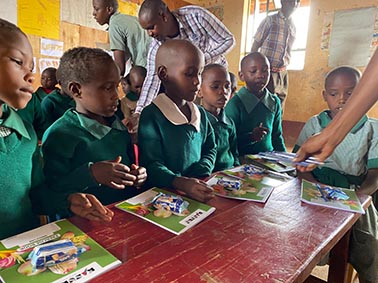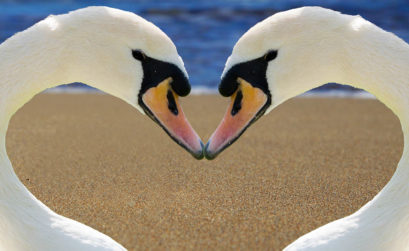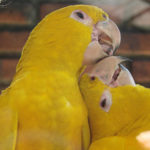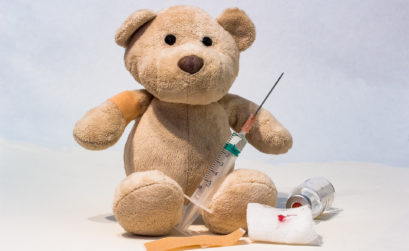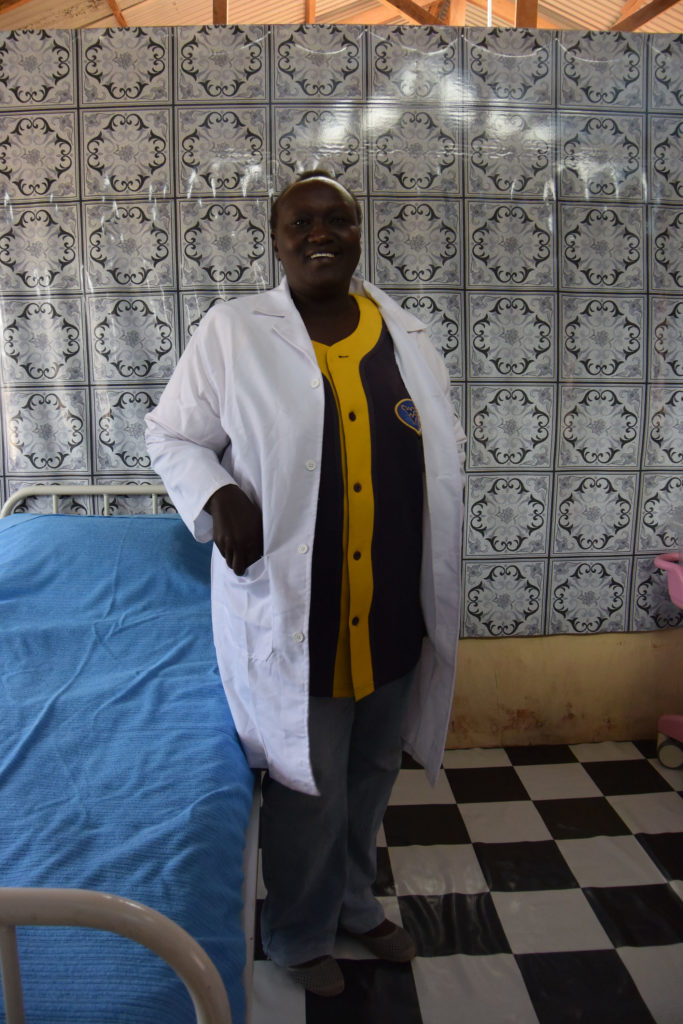WeCare-Team Goes to Kenya 2021Featured
Visit of current projects in Kenya
After two years we were able to return to Kenya in October 2021 to visit our ongoing projects.
As the Swiss direct flight is not available yet, we flew via Frankfort to Nairobi. After a quiet night at the airport hotel we, which is my dear friend Marcia and I, were picked up by Agnes Gitonga and her brother James.
Rehoboth Learning Center for Kings & Queens at Noonkopir
We went directly to the local mall in Kitengela to buy basics for the students of the Rehoboth Centre and the Mpirrishi Primary school. On our shopping list there were apples, cookies, hulo hoop, skipping ropes, sugar, salt, cooking oil, sanitary pads, and soap.
Then we went straight to the Rehoboth Learning Centre for Kings & Queens in Noonkopir, one of the slums of Kitengela. This is a private school but contrary to as is the case in Europe, Kenyan private schools are meant for the poorest kids whose parents cannot afford to send them to a public school. There we received a warm welcome with a variety of performances by all grades.
The Rehoboth Learning Centre is a particularly good example of how effective outside help can be. The “teachers’ room» features a board with a set of rules and regulations which are internalized by the students. Teachers refrain from beating the students which is still very widespread and common in these schools.
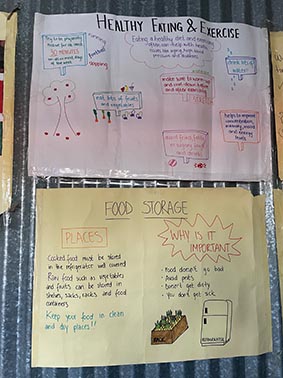

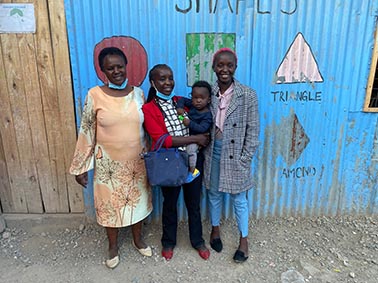
Four generation of power women
The school for currently 160 students has extremely limited space and resources available but boasts an overall positive and amical atmosphere. As the Kenyan government has changed its curriculum in the meantime, we have donated once again schoolbooks for the school.
Mpirrishi Primary School
On the next morning we left Kitengela to visit Mpirrishi Primary School in Oltepesi. The “mere” 104 km required a travelling time of three hours as in particular the last 30 km do not necessarily qualify to our definition of a road and at some point, we even asked ourselves whether we would manage to arrive there at all. And it was not even rainy season! The only means of transport available for people in this area is a so called Picky Picky Boy, a motorbike taxi, which could take them to the next dispensary. The price for a round trip is about 12.000 KES (about 120$). To put this price into perspective: a cook at the school earns around 60 $ a month.
What this really means in an emergency we should learn later in the day.
Agnes and her daughter Karen have been to Mpirrishi a couple of times before our visit to fight against the illegal but still practiced female genital mutilation (FGM). Their work was only possible thanks to the support and openness of the local principal, Manuel. The aim of our visit was to get an idea of the parents’ attitude towards this delicate topic and to meet the girls who had undergone FGM at the end of 2020 and who we are supporting. Little did we know as we witnessed an incredible performance. In front of the parents, the village elders, the teachers and the students, this group of girls prepared for their performance. One of the girls started to put on a pair of plastic gloves which took my breath away. I moved closer and started filming and yes: These incredibly brave girls performed the act which had traumatized them only a couple of months ago, their mutilation. This is one of the most intense experiences I have lived, ever, and not just I, but Marcia, Agnes, and her daughter as well. We all had tears in our eyes.
We had planned a private meeting with those girls following the end of the “official” part of our visit. On the way there, Agnes pointed out the “circumciser», an elder woman who makes her living buy performing FGM. Even this woman was obviously touched by the girls’ performance, and she promised to put down her razor. To make her promise become true, we will have to provide her with another source of income.
Suddenly, an excited Marcia pointed out a little girl who had hurt her wrist about two weeks ago whilst playing. The girl’s arm was tightly bandaged with a cloth and her hand was extremely swollen. After a lengthy discussion with the mother, we managed to convince her to take off the bandage and to accept our offer to have her taken to the next dispensary with our driver. This was the moment I realized how far reaching the consequences of FGM really are: It is the reason for illiteracy. If the little girl had not been taken to the dispensary, she would have likely lost her hand which, consequently, would have been interpreted as her being possessed by evil spirits.

Girl with hand injury 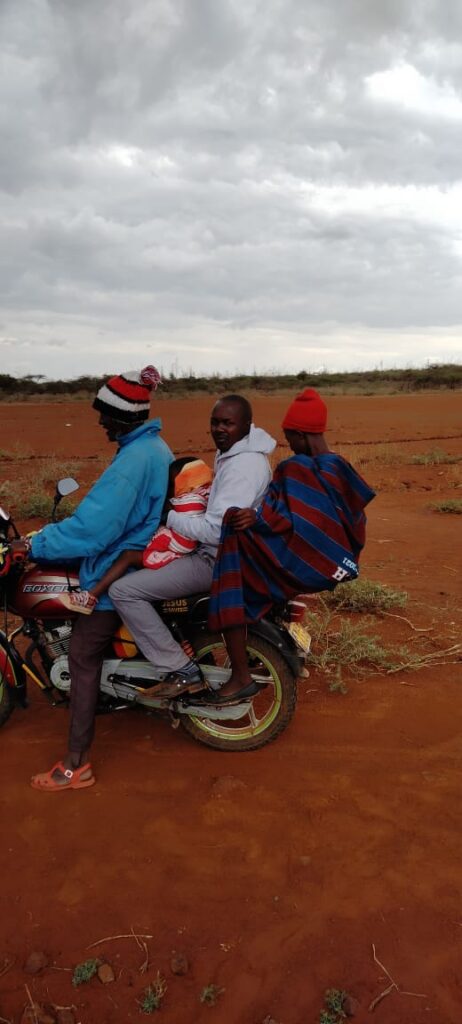
Picky Picky Boy takes the entire family to the dispensary 
Much better after a couple of days
On the way to our meeting with the girls, we bumped into two 23years old women, each of them mother of four children, whom Agnes had identified as potential FGM victims. Spontaneously, we invited them to our meeting.
The message of the girls was unanimous: Had they known what happened to them they would have never agreed, and they were all willing to do anything in their power to save their sisters and other girls and young women from this horrible procedure. Some of the girls are extremely traumatized and could not even talk about what had happened to them.
The two potential victims were listening carefully and incredulously. When asked about their motif to undergo FGM they both answered that they wanted to be “real” women. They were put under pressure by the husband and mother-in-law as well as by the midwife, who very often happens to be the circumciser, who threatened not to help her with future births. They did not show any comprehension for us reasoning that by bearing four children they already had proven their “being a real woman.” We do hope that these two young women will not succumb to the pressure of people around them.
We left Mpirrishi with mixed feelings. The positive attitude of the teachers and the village chairmen make us hope that this community will refrain from FGM in the future. But this will be an exceptionally long and winding road as there is a total lack of local infrastructure.
After four hours’ drive it was already night when we arrived back in Kitengela.
Nasaru Masai Girls Learning Center
Next on our list was the visit of our project “Nasaru Learning Centre for Masai Girls” in Iloshon for the next day. Before Kitengela, we made another visit to the Kitengela Mall where we shopped – once again – for basics such as soap, detergent, sugar, salt, oil, sanitary pads, and toilet paper. As we planned to spend the night there, we also bought mattresses, which were safely stored on the roof of the car. Packed to capacity we started our way to Iloshon and noticed that the quality of the dust road – at least to Kudu Hills Project – hat improved significantly – or was it our lowered expectations?
Anyhow, shortly before arrival at destination our car broke down and we were lucky enough that the head teacher Paul and Geoffrey, the constructor who is building the fence around Nasaru, came to our rescue.
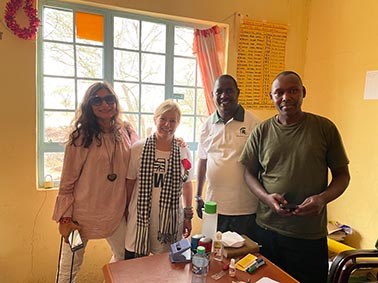
Paul, the headteacher and Paul, the builder
(whose name actually is not Paul)
Unfortunately, the ongoing drought has taken its toll and many parents cannot or do not want to pay for the boarding of their girls. The price for cattle has dropped and the parents are lacking money for food and water. This was also one of the reasons why we had asked Geoffrey, who as constructor gets to different villages, already one year ago to identify twenty-five girls who are even worse off than others, to be sponsored by WeCare to board and thus to finish their education. We have discussed the reason for the parents’ reluctance with all people involved, the teachers, the cook, the matron, and the watchman. The fee structure has been named as the main reason and we discussed this with the head teacher. Eventually, we reached a compromise to lower the fee for the parents. We also pointed out that it is also the teachers’ responsibility to promote the boarding among the parents and thus convincing them about the importance of school education.
Finally, we had some time with the girls, and we checked the presence of all the girls supported by us. Except for one sick student, all the students were present.
We were surprised to discover that – except for few students – most of the girls did not know their birthday or at least their birth year. The following rope skipping competition was an enjoyable break for all.
After having had a meeting with the personal in our “bedroom” far beyond 10:00 pm, we were incredibly surprised and above all tired when were awoken at 04:30 am as the girls got up with a lot of noise.
The following day we toured all grades and distributed pencils, pens, and exercise books to all 450 students.
Unfortunately, our too short stay has ended and it would have been nice to have more time to spend with the girls and to interact with them directly. Agnes had only identified potential victims of FGM as «designated girls” have filed down lower incisors.
On our way back we made a little detour and Agnes pointed out a piece of land which she had rented thanks to WeCare-Association’s last year’s feeding program and which now provides the students of the Rehoboth Learning Centre with vegetables.
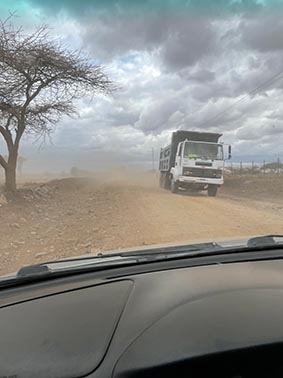


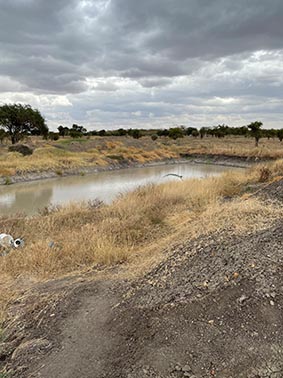
A small water reservoir next to tthe field
The bottom line of our visit to Kenya: Corona has worsened the situation for the poorest people and there is so much to do. So, let us do this: We are looking for godparents for our girls to make sure that these girls will be able to finish school and will be offered the opportunity for further education beyond primary school. As godfather/godmother of a girl, you will have the chance to establish a relationship with the girl and to follow up on her development. There will be progress reports three times a year, a Christmas letter written by the girl, the annual activity report of WeCare-Association as well as a small gift handmade with love in our workshop in Cambodia. More information will follow soon on our website: www.wecare-association.ch as well as on social media Instagram (https://www.instagram.com/wecareassociation/) and Facebook (https://www.facebook.com/WeCareAssociation).
We are grateful for very tiring and intensive day which touched and motivated us. We have met wonderful people who deserve a better future. “Education is life.” Only now do I understand the real meaning of this catch phrase.


The Crew
Thank you very much in advance for your support under: https://en.wecare-association.ch/become-active/ .

